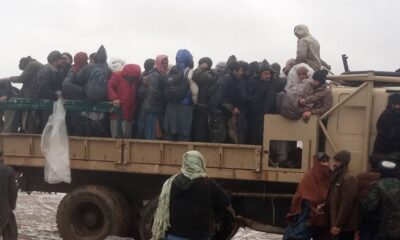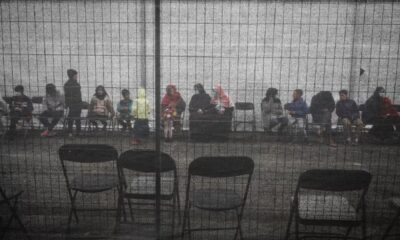Regional
Herat girls call for reopening of their schools
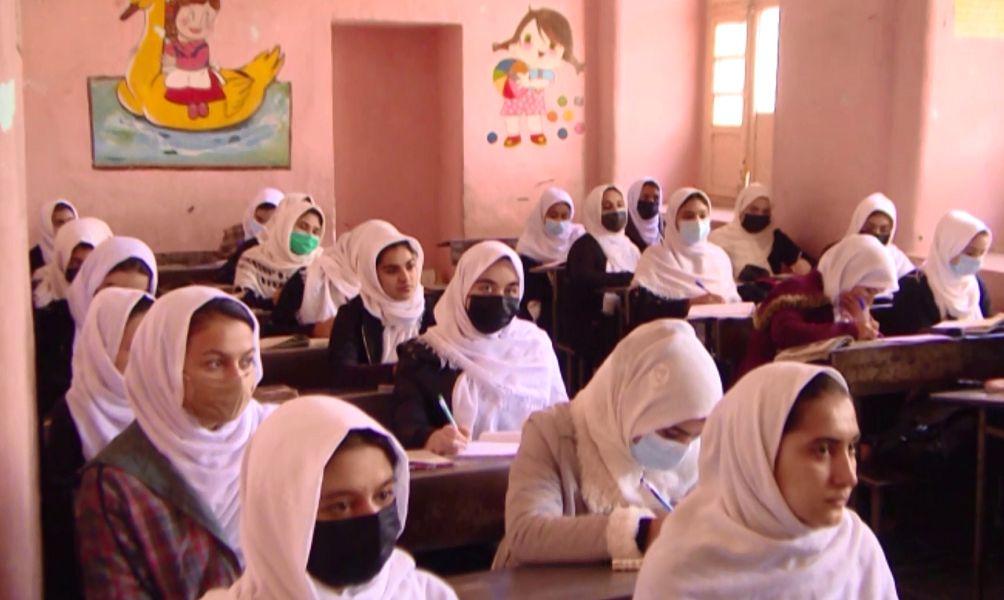
A number of girls in Herat on Wednesday called for the reopening of schools for students above the sixth grade.
Holding a painting exhibition, the girls said that they wanted to give a message to the government and the world that education is the right of both girls and boys.
They exhibited about 60 paintings particularly for children.
“Our exhibition has two objectives. First is to reassure children that they are part of society and second is to remind the officials not to focus on their interests but pay attention also to children,” said Asma Mehrwarz, an organizer of the exhibition.
Lina Qaderi, a student, said: “We want girls’ schools to reopen, because every child has a right to education irrespective of being a boy or a girl.”
“We as students are preparing for Kankoor (university entrance test). We didn’t want our 10th, 11th and 12 grades to pass like this. We want the Islamic Emirate to reopen the girls’ schools,” said Sadaf, a student.
The visitors welcomed the exhibition and called for more.
“If we look at foreign countries, they display the smallest achievement of their children. But we don’t provide such an opportunity to our children. I hope conditions will improve in future so that our children could also display their talents,” said Sana, a student.
The Islamic Emirate of Afghanistan (IEA) in March reversed a decision to allow girls to return to secondary and high schools.
A notice from the education ministry said that schools would reopen after a decision over the uniform of female students was made in accordance with Sharia law and Afghan tradition.
IEA’s Acting Public Health Minister Qalandar Ebad, however, said recently that the lack of funds was also a reason for the closure of girls’ schools.
Regional
Pakistan’s military chief Asim Munir in spotlight over Trump’s Gaza plan
Munir was earlier this month anointed chief of the defence forces to head the air force and navy as well, with a job extension until 2030.
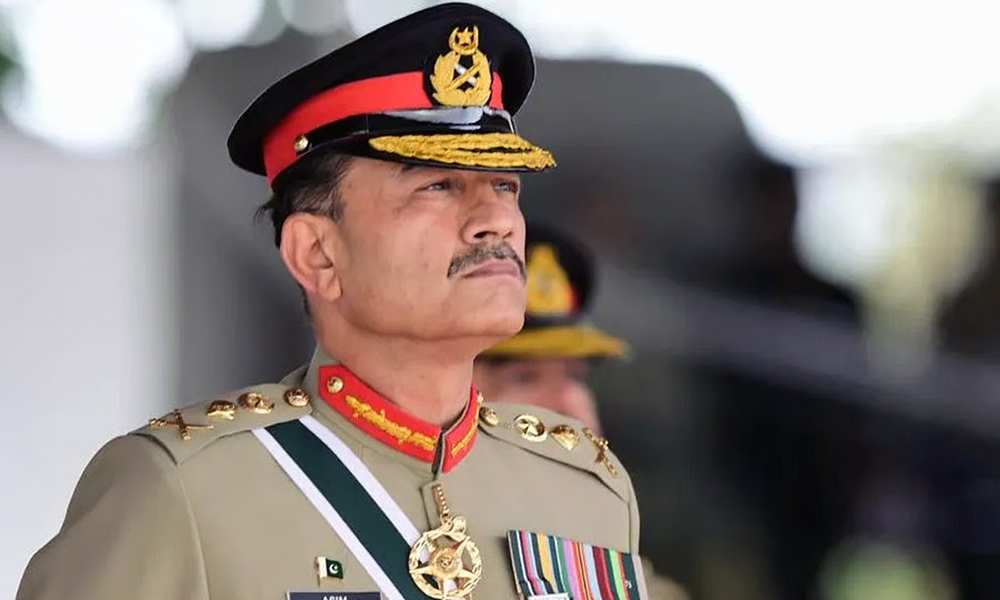
Pakistan’s most powerful military chief in decades faces the toughest test of his newly amassed powers as Washington pushes Islamabad to contribute troops to the Gaza stabilisation force, a move analysts say could spark domestic backlash.
Field Marshal Asim Munir is expected to fly to Washington to meet President Donald Trump in the coming weeks for a third meeting in six months that will likely focus on the Gaza force, two sources told Reuters, one of them a key player in the general’s economic diplomacy.
Trump’s 20-point Gaza plan calls for a force from Muslim nations to oversee a transition period for reconstruction and economic recovery in the war-torn Palestinian territory, decimated by over two years of Israeli military bombardment.
Many countries are wary of the mission to demilitarise Gaza’s Islamist militant group Hamas, which could drag them into the conflict and enrage their pro-Palestinian and anti-Israeli populations.
But Munir has built a close relationship with the mercurial Trump to repair years of mistrust between Washington and Islamabad. In June, he was rewarded with a White House lunch – the first time a U.S. president hosted Pakistan’s army chief alone, without civilian officials.
“Not contributing (to the Gaza stabilisation force) could annoy Trump, which is no small matter for a Pakistani state that appears quite keen to remain in his good graces – in great part to secure U.S. investment and security aid,” said Michael Kugelman, Senior Fellow, South Asia at Washington-based Atlantic Council.
Pakistan, the world’s only Muslim country with nuclear weapons, has a battle-hardened military having gone to war with arch-rival India three times and a brief conflict this summer.
It has also tackled insurgencies in its far-flung regions and is currently embroiled in a bruising war with Islamist militants who it says are operating from Afghanistan.
Pakistan’s military strength means “there is a greater pressure on Munir to deliver his capacity,” said author and defence analyst Ayesha Siddiqa.
Pakistan’s military, foreign office and information ministry did not respond to questions from Reuters. The White House also did not respond to a request for a comment.
Pakistani Foreign Minister Ishaq Dar said last month that Islamabad could consider contributing troops for peacekeeping but disarming Hamas “is not our job.”
Munir was earlier this month anointed chief of the defence forces to head the air force and navy as well, with a job extension until 2030.
He will retain his field marshal title forever, as well as enjoy lifetime immunity from any criminal prosecution under the constitutional amendments that Pakistan’s civilian government pushed through parliament late last month.
“Few people in Pakistan enjoy the luxury of being able to take risks more than Munir. He has unbridled power, now constitutionally protected,” Kugelman added.
“Ultimately, it will be Munir’s rules, and his rules only.”
Over the past few weeks, Munir has met military and civilian leaders from countries such as Indonesia, Malaysia, Saudi Arabia, Turkey, Jordan, Egypt and Qatar, according to the military’s statements, which Siddiqa said appeared to be consultations on the Gaza force.
But the big concern at home is that the involvement of Pakistan troops in Gaza under a U.S.-backed plan could re-ignite protests from Pakistan’s Islamist parties that are deeply opposed to the U.S. and Israel.
The Islamists have street power to mobilise thousands.
A powerful and violent anti-Israel Islamist party that fights for upholding Pakistan’s ultra-strict blasphemy laws was banned in October.
Authorities arrested its leaders and over 1,500 supporters and seized its assets and bank accounts in an ongoing crackdown, officials said.
While Islamabad has outlawed the group, its ideology is still alive.
The party of former jailed premier, Imran Khan, whose supporters won the most seats in the 2024 national elections and has wide public support, also has an axe to grind against Munir.
Abdul Basit, Senior Associate Fellow, S. Rajaratnam School of International Studies in Singapore, said if things escalated once the Gaza force was on the ground, it would cause problems quickly.
“People will say ‘Asim Munir is doing Israel’s bidding’ – it will be foolhardy of anyone not to see it coming.”
Regional
Two US soldiers and an interpreter killed in suspected Daesh attack in Syria
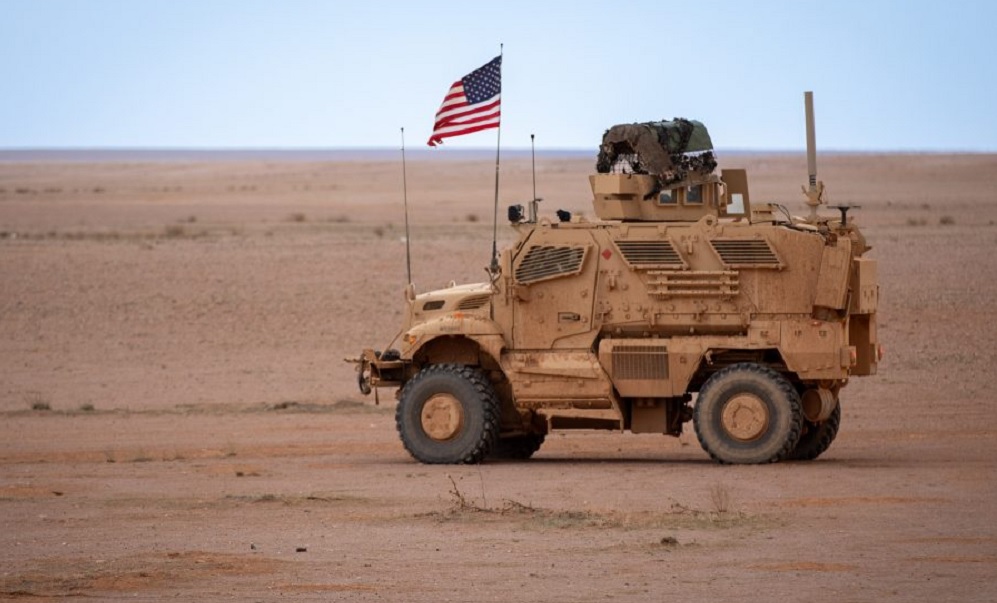
Two U.S. Army soldiers and a civilian interpreter were killed in Syria on Saturday by a suspected Daesh attacker who targeted a convoy of American and Syrian forces before being shot dead, the U.S. military said.
The attack was barely a month after Syria announced it had signed a political cooperation agreement with the U.S.-led coalition against Daesh, which coincided with Syrian President Ahmed al-Sharaa’s visit to the White House, Reuters reported.
The attacker was a member of the Syrian security forces, three local officials told Reuters. A Syrian Interior Ministry spokesperson told a state-run television channel that the man did not have a leadership role in the security forces.
“On December 10, an evaluation was issued indicating that this attacker might hold extremist ideas, and a decision regarding him was due to be issued tomorrow, on Sunday,” the spokesperson, Noureddine el-Baba, told Syrian television channel Al-Ikhbariya.
In a post on his Truth Social platform, U.S. President Donald Trump vowed “very serious retaliation,” mourning the loss of “three great patriots”. He described the incident in remarks to reporters as a “terrible” attack.
CENTRAL COMMAND SAYS THE ATTACKER WAS KILLED
Three U.S. soldiers were also wounded in the attack, the U.S. military’s Central Command said.
In a statement, Central Command said the attack by a lone gunman occurred “as the soldiers were conducting a key leader engagement” in the central Syrian town of Palmyra. “Partner forces” killed the attacker, U.S. Secretary of Defense Pete Hegseth wrote in a social media post.
A senior U.S. official said initial assessments indicated that Daesh probably carried out the attack, although the militant group did not immediately claim responsibility.
It took place in an area not controlled by the Syrian government, the official said.
Baba said Syria had warned about the possibility of an Daesh attack in that region but that “coalition forces did not take the Syrian warnings… into account.”
He said Syria would determine whether the attacker was linked to Daesh or merely subscribed to the group’s ideology.
The soldiers’ names will be withheld until 24 hours after the next-of-kin notification, the U.S. military said.
US ENVOY CONDEMNS THE ATTACK
Syrian state news agency SANA quoted a security source as saying two Syrian service personnel were injured, without providing further details. The source told SANA that American helicopters evacuated the injured to a U.S. base in Syria’s Al-Tanf region near the Iraqi border.
Tom Barrack, the U.S. ambassador to Turkey and special envoy to Syria, condemned the attack.
“We mourn the loss of three brave U.S. service members and civilian personnel and wish a speedy recovery to the Syrian troops wounded in the attack,” Barrack said in a statement. “We remain committed to defeating terrorism with our Syrian partners.”
The U.S.-led coalition has carried out air strikes and ground operations in Syria targeting Islamic State suspects in recent months, often with the involvement of Syria’s security forces. Syria last month also carried out a nationwide campaign arresting more than 70 people accused of links to the group.
The United States has troops stationed in northeastern Syria as part of a decade-long effort to help a Kurdish-led force there.
Regional
Pakistan’s ex-spy chief jailed for 14 years in rare military rebuke
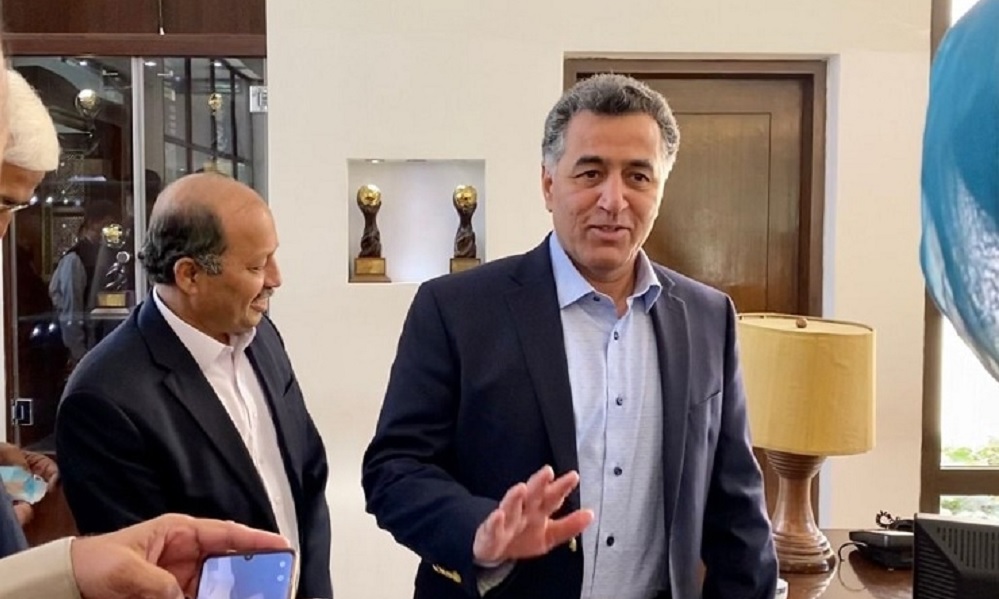
A military court in Pakistan jailed former spy chief Faiz Hamid for 14 years on four charges including interference in politics, the army said on Thursday, in a rare conviction of a once-powerful general in the South Asian nation.
Hamid, in custody and under trial since August last year, was the chief of Pakistan’s powerful Inter-Services Intelligence agency from 2019 to 2021 under jailed former Prime Minister Imran Khan, and the two were considered close allies.”The accused was tried on four charges,” the military said in a statement, Reuters reported.
The charges ranged from engaging in political activities and violating the Official Secrets Act in a way detrimental to safety and state interest to misuse of authority and resources as well as causing wrongful loss to individuals, it added.
TIES TO JAILED FORMER PM IMRAN KHAN
The former general was found guilty on all the charges, the military said, without detailing the incidents. His conviction followed “lengthy and laborious legal proceedings”, it added, and Hamid has a right of appeal.
He also faces a separate investigation of his role in May 2023 attacks by thousands of Khan’s supporters on scores of military installations and offices to protest against the arrest of the 72-year-old former cricket star.
Information Minister Attaullah Tarar said Hamid had crossed “red lines” and acted as an advisor to Khan’s party to try to create chaos in the country.
Hamid’s lawyers or family could not be reached for comment. Khan’s PTI party did not immediately respond to a Reuters request for comment.
Khan has been in jail since August 2023.
Khan and nearly 150 of his party leaders and supporters have already been indicted by an anti-terrorism court on charges of inciting the attacks that also targeted military headquarters in the garrison city of Rawalpindi.
Khan and his associates deny the charges.
Hamid’s close ties to Khan, who blames the military for ousting him from power in 2022, were a source of tension between the cricketer-turned-politician and the military.
The military, which has directly ruled the nation of 241 million for more than three decades of its 77-year independent history, plays a big role in making or breaking governments.
-

 Latest News5 days ago
Latest News5 days agoGermany speeds up admission of Afghans from Pakistan
-

 Sport5 days ago
Sport5 days agoIPL 2026 Auction set for Abu Dhabi with $28.6 million purse at stake
-
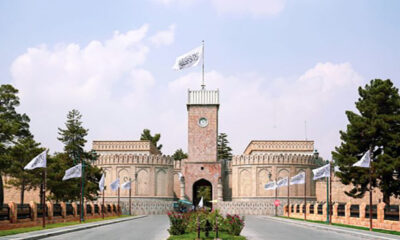
 Latest News5 days ago
Latest News5 days agoAfghanistan to establish independent oil and gas authority
-

 Latest News5 days ago
Latest News5 days agoUS intelligence chief warns of ‘direct threat’ from suspected terrorists inside the country
-
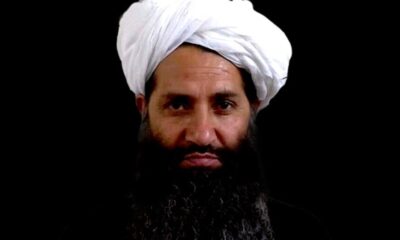
 Latest News3 days ago
Latest News3 days agoIEA supreme leader stresses enforcement of Sharia law and sincere public service
-

 International Sports4 days ago
International Sports4 days agoILT20: Desert Vipers qualify for playoffs with five-wicket win over Dubai Capitals
-

 World5 days ago
World5 days agoFather and son behind Bondi Jewish festival shooting that killed 15, Australian police say
-

 International Sports4 days ago
International Sports4 days agoATN secures broadcast rights for four major AFC sporting events




